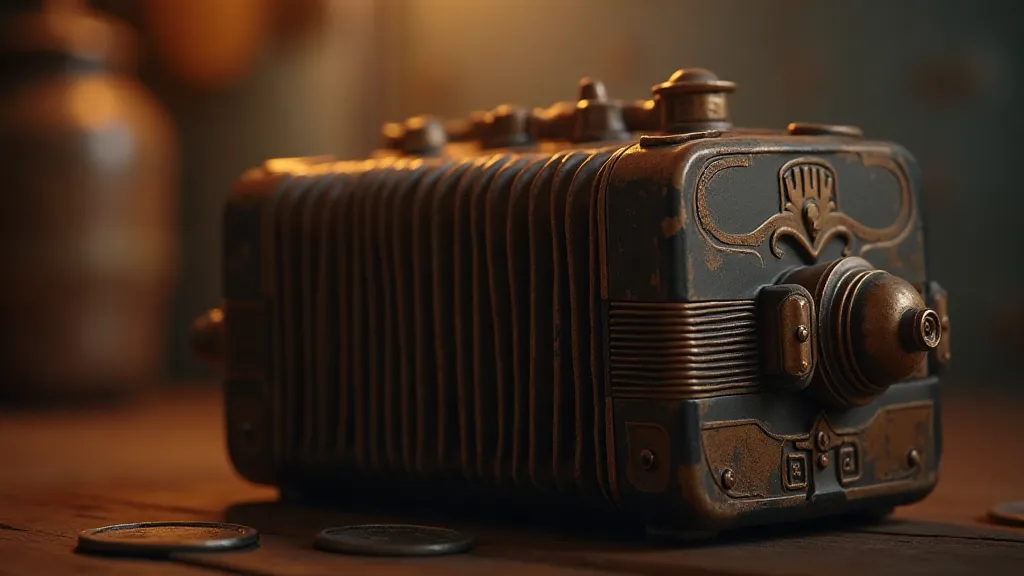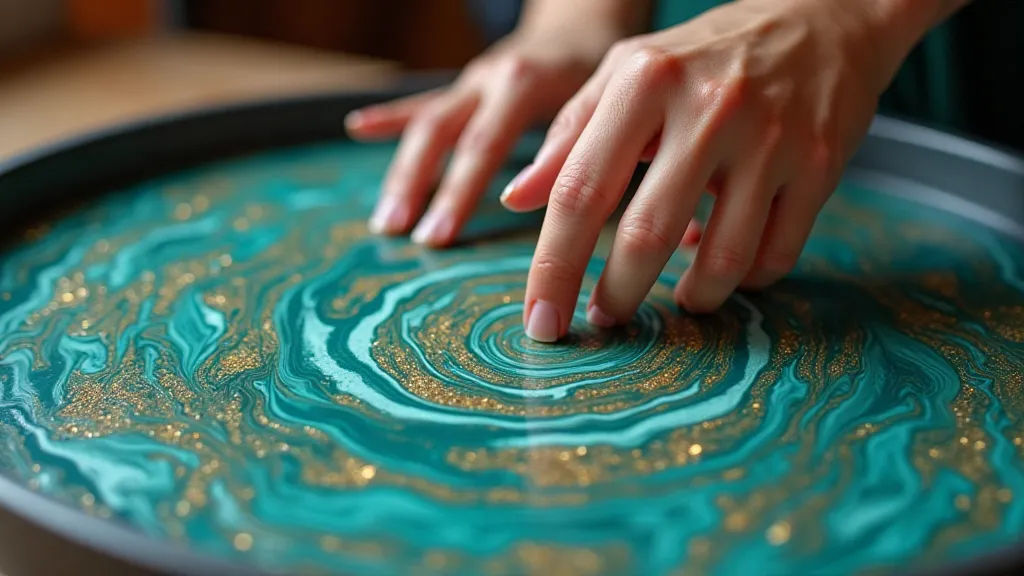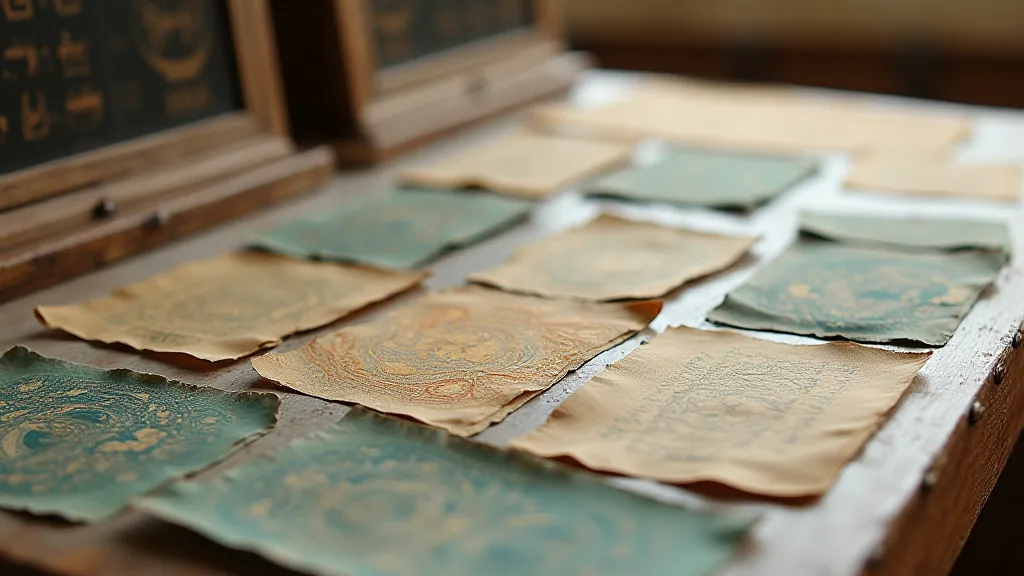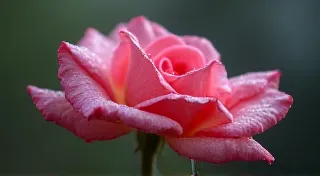Chromatic Rhapsody: Orchestrating Color and Language
There’s a particular melancholy that settles when you hold an antique accordion. It's not a sadness of loss, necessarily, but a poignant resonance with echoes of celebrations long past, the laughter of families dancing under twinkling lights, the hesitant melody of a first love declared. The instrument, often beautiful in its intricate detailing, speaks volumes about human ingenuity and the enduring power of music. And it’s this same sense of layered history, of unexpected beauty arising from a carefully orchestrated process, that I find so captivating in the art of paper marbling.
Paper marbling, at its heart, is about controlled chaos. It's about taking pigments, dispersing them across a thickened water bath, and then carefully transferring that swirling pattern onto paper. The initial impression might be of randomness, but truly skilled marblers understand the delicate dance between pigment, bath, and paper. They’re composers of color, conducting a visual symphony where each hue contributes to the overall harmony. This parallels the craftsman who meticulously assembles an accordion, each bellows, reed, and key playing its vital role in creating a voice – a unique expression of artistic intent.

A Brief History: From Ottoman Dreams to European Elegance
The roots of paper marbling, or Ebru in Turkish, stretch back centuries within the Ottoman Empire. It wasn't merely an artistic endeavor; it was intertwined with Sufi mysticism, considered a spiritual practice. The floating patterns were seen as reflections of divine creation, the swirling colors echoing the boundless nature of the universe. Imagine a master artisan, meticulously preparing the *deniz* (the marbling bath) according to ancient recipes, passing down knowledge through generations. The process itself became a form of meditation, a pathway to connect with something larger than oneself.
From the Ottoman Empire, the art migrated to Europe, adopted and adapted by artists and craftspeople. While the spiritual connection might have lessened somewhat, the beauty and the intriguing technical challenges continued to draw practitioners. In 17th-century England, for instance, it became a fashionable way to decorate endpapers for books, demonstrating a keen eye for aesthetics and a desire to infuse everyday objects with a touch of artistry. The intricate patterns were a mark of quality and sophistication, showcasing not just the beauty of the marbled paper but also the skill of the artisan who created it.
The Alchemy of the Bath: Materials and Techniques
The magic of paper marbling begins with the *deniz*, the thickened water bath that serves as the canvas for the pigments. Traditionally, this bath is created using a combination of seaweed (Carrageenan), finely ground gum tragacanth, and sometimes other natural thickeners. The proportions are crucial; too thin, and the pigments will simply sink; too thick, and they won't spread evenly. It's a delicate balance, honed through experience and a deep understanding of the materials.
Once the bath is prepared, the pigments are introduced. These aren’t your typical paints. They’re finely ground powders – often mineral pigments like iron oxide (for reds and browns), ultramarine (for blues, historically derived from lapis lazuli), or organic dyes derived from plants. The pigments are carefully mixed with a dispersant, like ox gall (derived from cow bile), which helps them spread evenly on the water’s surface. Then, the true artistry begins – manipulating the pigments with rakes, brushes, and other tools to create the desired patterns. The possibilities are nearly endless, ranging from delicate, flowing designs to bold, geometric arrangements.

Orchestrating Color: Finding Your Visual Voice
For me, the most fascinating aspect of paper marbling is the element of controlled unpredictability. While you can plan and execute specific techniques, the final result is always a surprise. This is where the “orchestration” comes in— understanding how different colors will interact, how the pigments will spread and blend. A bold combination of contrasting hues – a vibrant crimson against a deep indigo, for example— can create a dynamic, dramatic effect. A more subtle palette of analogous colors— shades of blue and green— can evoke a sense of tranquility and harmony.
Think about how a restorer approaches an antique accordion. They don’s simply apply a fresh coat of paint. They understand the original materials, the techniques used, the intended aesthetic. They strive to preserve the integrity of the instrument while bringing it back to a state of working beauty. Similarly, in paper marbling, a seasoned artist doesn’t try to dominate the process. They work *with* the materials, guiding the pigments, responding to their movements, and embracing the unexpected beauty that emerges.
Beyond the Surface: Restoration and Collecting
If you're drawn to the beauty of paper marbling, you might find yourself drawn to collecting antique marbled papers or even considering restoring existing pieces. Authentic antique marbled papers are often highly sought after, particularly those with distinct historical provenance. The patterns themselves, the colors used, and even the quality of the paper can provide clues about its age and origin. Look for signs of wear and tear, evidence of the paper’s history— these imperfections tell a story.
Restoration, however, is a delicate undertaking. Harsh chemicals can damage the paper and fade the colors. Ideally, restoration should focus on stabilization— addressing any structural weaknesses and preventing further deterioration. A skilled conservator will use reversible techniques, ensuring that the original character of the paper is preserved.

A Legacy of Beauty and Harmony
The art of paper marbling is more than just a craft; it’s a connection to history, a celebration of beauty, and a testament to the power of human creativity. Like the enduring melody of an antique accordion, the swirling patterns of marbled paper resonate with a sense of timeless elegance. It invites us to appreciate the beauty of imperfection, to embrace the unexpected, and to find harmony in the dance between control and chaos. It's a visual language, a chromatic rhapsody, waiting to be discovered.





